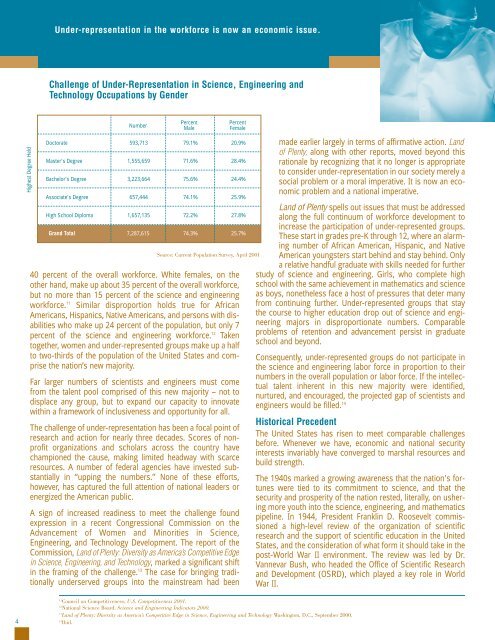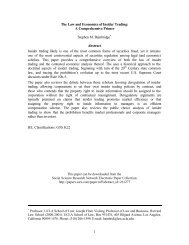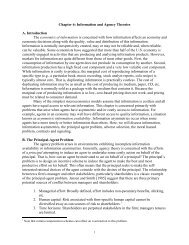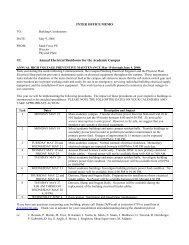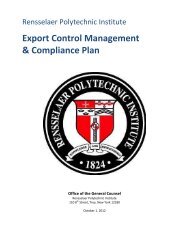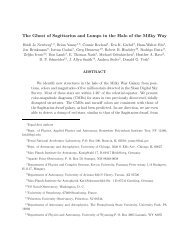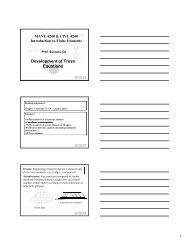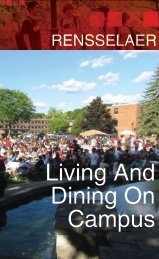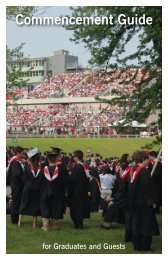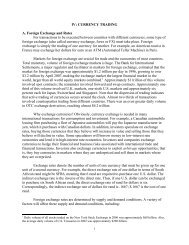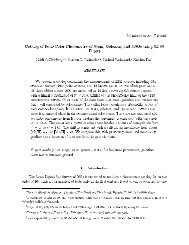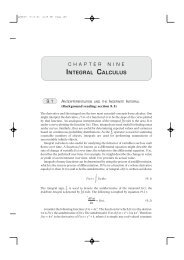Quiet Crisis - Building Engineering and Science Talent
Quiet Crisis - Building Engineering and Science Talent
Quiet Crisis - Building Engineering and Science Talent
You also want an ePaper? Increase the reach of your titles
YUMPU automatically turns print PDFs into web optimized ePapers that Google loves.
Under-representation in the workforce is now an economic issue.<br />
Challenge of Under-Representation in <strong>Science</strong>, <strong>Engineering</strong> <strong>and</strong><br />
Technology Occupations by Gender<br />
Highest Degree Held<br />
Number<br />
Percent<br />
Male<br />
Percent<br />
Female<br />
Doctorate 593,713 79.1% 20.9%<br />
Master's Degree 1,555,659 71.6% 28.4%<br />
Bachelor's Degree<br />
Associate's Degree<br />
High School Diploma<br />
Gr<strong>and</strong> Total<br />
3,223,664 75.6% 24.4%<br />
657,444 74.1% 25.9%<br />
1,657,135 72.2% 27.8%<br />
7,287,615 74.3% 25.7%<br />
Source: Current Population Survey, April 2001<br />
40 percent of the overall workforce. White females, on the<br />
other h<strong>and</strong>, make up about 35 percent of the overall workforce,<br />
but no more than 15 percent of the science <strong>and</strong> engineering<br />
workforce. 11 Similar disproportion holds true for African<br />
Americans, Hispanics, Native Americans, <strong>and</strong> persons with disabilities<br />
who make up 24 percent of the population, but only 7<br />
percent of the science <strong>and</strong> engineering workforce. 12 Taken<br />
together, women <strong>and</strong> under-represented groups make up a half<br />
to two-thirds of the population of the United States <strong>and</strong> comprise<br />
the nation’s new majority.<br />
Far larger numbers of scientists <strong>and</strong> engineers must come<br />
from the talent pool comprised of this new majority – not to<br />
displace any group, but to exp<strong>and</strong> our capacity to innovate<br />
within a framework of inclusiveness <strong>and</strong> opportunity for all.<br />
The challenge of under-representation has been a focal point of<br />
research <strong>and</strong> action for nearly three decades. Scores of nonprofit<br />
organizations <strong>and</strong> scholars across the country have<br />
championed the cause, making limited headway with scarce<br />
resources. A number of federal agencies have invested substantially<br />
in “upping the numbers.” None of these efforts,<br />
however, has captured the full attention of national leaders or<br />
energized the American public.<br />
A sign of increased readiness to meet the challenge found<br />
expression in a recent Congressional Commission on the<br />
Advancement of Women <strong>and</strong> Minorities in <strong>Science</strong>,<br />
<strong>Engineering</strong>, <strong>and</strong> Technology Development. The report of the<br />
Commission, L<strong>and</strong> of Plenty: Diversity as America’s Competitive Edge<br />
in <strong>Science</strong>, <strong>Engineering</strong>, <strong>and</strong> Technology, marked a significant shift<br />
in the framing of the challenge. 13 The case for bringing traditionally<br />
underserved groups into the mainstream had been<br />
11<br />
Council on Competitiveness, U.S. Competitiveness 2001.<br />
12<br />
National <strong>Science</strong> Board. <strong>Science</strong> <strong>and</strong> <strong>Engineering</strong> Indicators 2000.<br />
made earlier largely in terms of affirmative action. L<strong>and</strong><br />
of Plenty, along with other reports, moved beyond this<br />
rationale by recognizing that it no longer is appropriate<br />
to consider under-representation in our society merely a<br />
social problem or a moral imperative. It is now an economic<br />
problem <strong>and</strong> a national imperative.<br />
L<strong>and</strong> of Plenty spells out issues that must be addressed<br />
along the full continuum of workforce development to<br />
increase the participation of under-represented groups.<br />
These start in grades pre-K through 12, where an alarming<br />
number of African American, Hispanic, <strong>and</strong> Native<br />
American youngsters start behind <strong>and</strong> stay behind. Only<br />
a relative h<strong>and</strong>ful graduate with skills needed for further<br />
study of science <strong>and</strong> engineering. Girls, who complete high<br />
school with the same achievement in mathematics <strong>and</strong> science<br />
as boys, nonetheless face a host of pressures that deter many<br />
from continuing further. Under-represented groups that stay<br />
the course to higher education drop out of science <strong>and</strong> engineering<br />
majors in disproportionate numbers. Comparable<br />
problems of retention <strong>and</strong> advancement persist in graduate<br />
school <strong>and</strong> beyond.<br />
Consequently, under-represented groups do not participate in<br />
the science <strong>and</strong> engineering labor force in proportion to their<br />
numbers in the overall population or labor force. If the intellectual<br />
talent inherent in this new majority were identified,<br />
nurtured, <strong>and</strong> encouraged, the projected gap of scientists <strong>and</strong><br />
engineers would be filled. 14<br />
Historical Precedent<br />
The United States has risen to meet comparable challenges<br />
before. Whenever we have, economic <strong>and</strong> national security<br />
interests invariably have converged to marshal resources <strong>and</strong><br />
build strength.<br />
The 1940s marked a growing awareness that the nation's fortunes<br />
were tied to its commitment to science, <strong>and</strong> that the<br />
security <strong>and</strong> prosperity of the nation rested, literally, on ushering<br />
more youth into the science, engineering, <strong>and</strong> mathematics<br />
pipeline. In 1944, President Franklin D. Roosevelt commissioned<br />
a high-level review of the organization of scientific<br />
research <strong>and</strong> the support of scientific education in the United<br />
States, <strong>and</strong> the consideration of what form it should take in the<br />
post-World War II environment. The review was led by Dr.<br />
Vannevar Bush, who headed the Office of Scientific Research<br />
<strong>and</strong> Development (OSRD), which played a key role in World<br />
War II.<br />
4<br />
13<br />
L<strong>and</strong> of Plenty: Diversity as America’s Competitive Edge in <strong>Science</strong>, <strong>Engineering</strong> <strong>and</strong> Technology Washington, D.C., September 2000.<br />
14<br />
Ibid.


